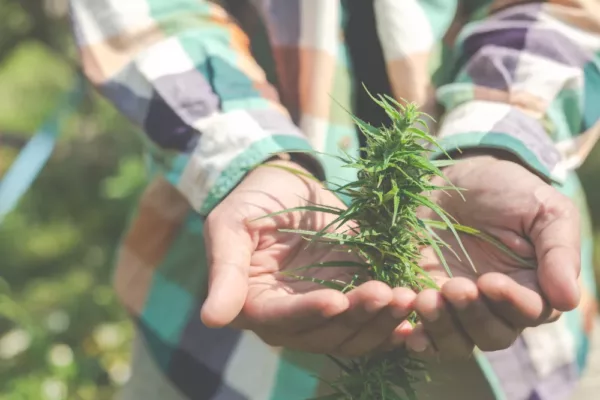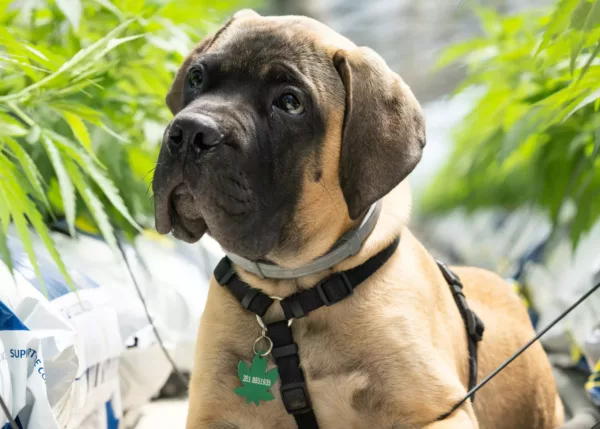Your basket is empty
Cannabis: how to distinguish between male and female plants?
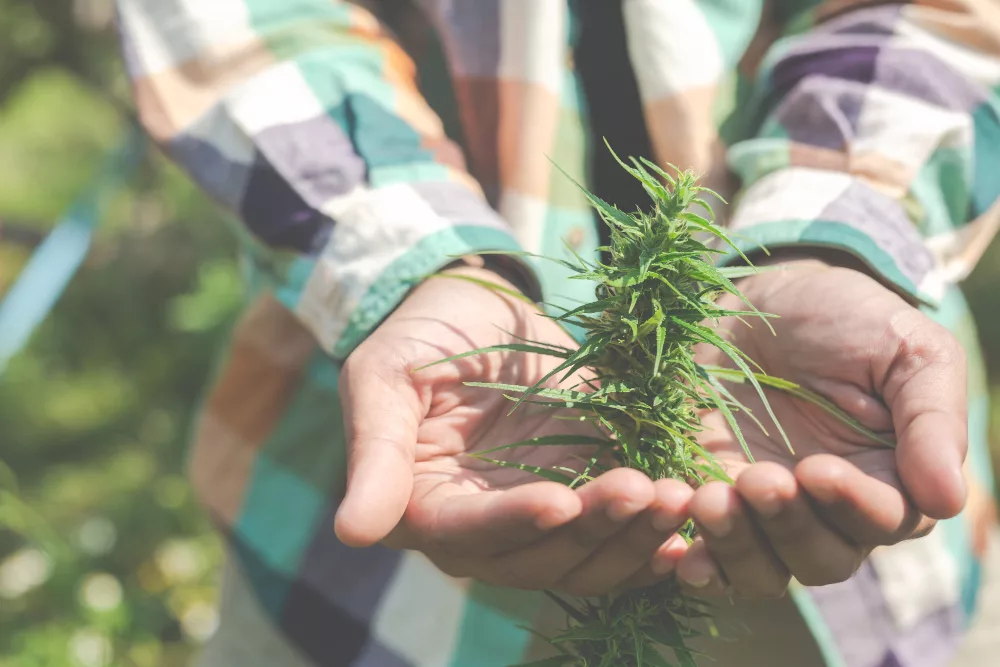
Don't know how to tell male and female cannabis plants apart? Did you know that confusing the sexes can turn your precious resin buds into useless seeds? Knowing how to identify whether you're dealing with male or female cannabis is therefore a crucial skill for any grower.
This article explains the key visual signs, the pitfalls of hermaphroditism and foolproof methods for ensuring a 100% female crop. Find out how to identify each sex as early as pre-flowering, avoid pollination and exploit even male plants to maximize your harvest. In cannabis cultivation, a single male can change everything.
How do you distinguish between male and female cannabis?
Knowing how to identify male and female cannabis is essential for any grower, whether amateur or professional. Recognizing the differences between the sexes of plants helpsoptimize the harvest and avoid unwanted pollination.
We'll guide you through the visual characteristics of female plants, the distinguishing marks of male cannabis plants, and a special case: hermaphroditic plants, to keep a close eye on.
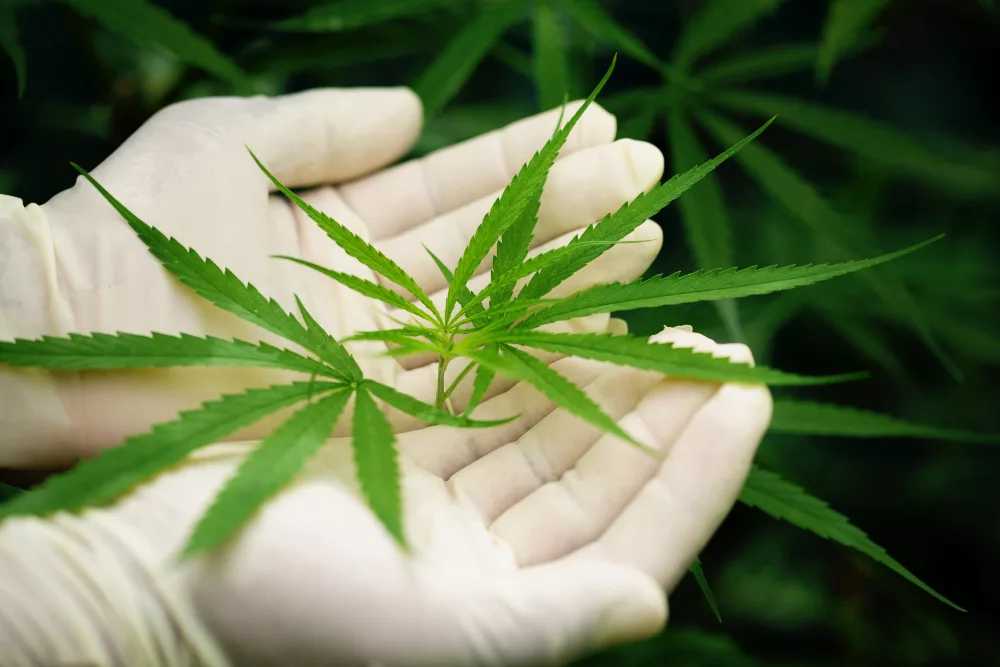
Visual characteristics of female plants
Female cannabis plants are particularly attractive to growers, because they produce the much sought-after resinous buds. To identify them, look out for the appearance of small teardrop-shaped structures at the nodes of the plants.
This is where the first traces of their sex are hidden: fine white or orange hairs, called pistils, emerge from the calyxes. Their role is to capture pollen to form seeds. In females, these hairs generally appear between the fourth and sixth week after germination.
Knowing how to distinguish between a male and a female cannabis plant is therefore essential to correctly orientate cultivation, especially if the aim is to obtain cannabinoid-rich flowers without producing seeds.
Distinctive features of male cannabis plants
Male plants are more discreet at the start of growth. Their first telltale signs are small green balls that form at the nodes well before the females. These balls are the future pollen sacs.
As the plant matures, these structures enlarge to form clusters resembling miniature bananas. Another feature of male plants is that they grow faster than females and develop a thicker central stem.
Knowing how to differentiate between a male and a female cannabis plant from the very first weeks of growth is crucial, as it enables you to control pollination and orientate your cultivation according to your objectives: flower production or reproduction. This knowledge is all the more important for growers aiming to offer the best CBD products in Switzerland, where flower quality and purity are essential criteria.
They have no buds, but play an important role in plant reproduction. Their pollen fertilizes females to create new seeds.
Hermaphroditic plants: a special case
Sometimes, plants develop both male and female organs: this is known as hermaphroditism. This phenomenon may result from environmental stress or genetic predisposition.
Under certain conditions, a female plant can develop small banana-shaped structures at the heart of its buds. These anthers release pollen and risk contaminating the entire crop. This leads to the formation of seeds in the heads, reducing their quality.
That's why it's essential to know how to recognize the characteristics of a male or female cannabis plant, to better spot the signs of hermaphroditism and react quickly. It's best to spot them early thanks to those subtle details at the nodes or in the heart of the buds. At the first sign, remove them to protect the rest of your crop.
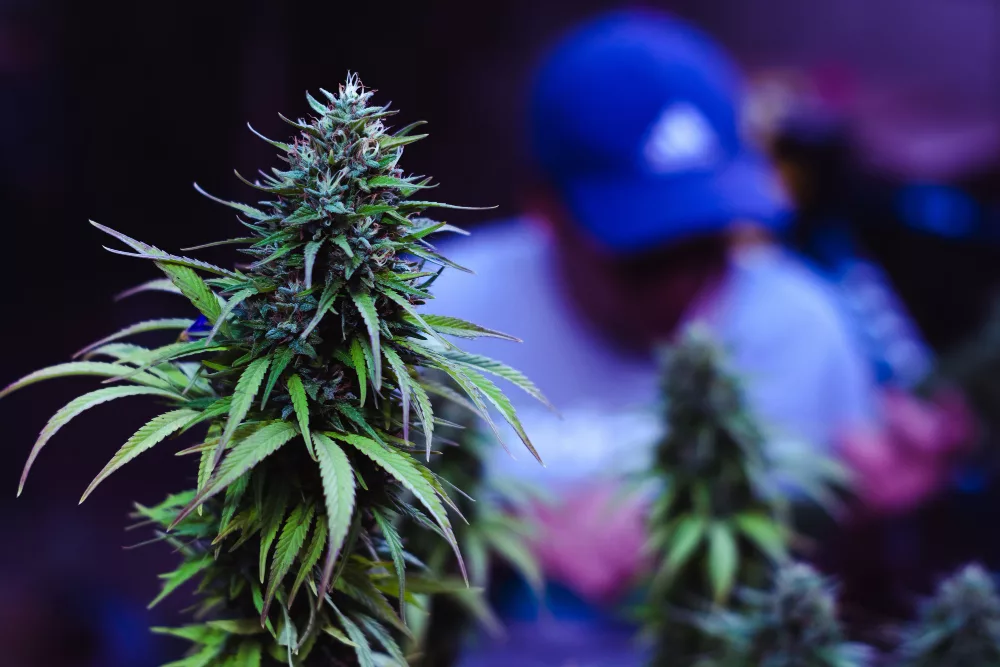
The importance of sex in cannabis cultivation
In cannabis cultivation, determining whether a plant is male or female cannabis is of paramount importance. This criterion directly influences the quality, potency and purpose of the harvest.
While female plants are prized for their cannabinoid-rich flowers, males play an equally essential role in reproduction. Understanding the differences and uses of each sex allows you to optimize your crops according to your objectives.
Why do growers look for female plants?
Female plants are the undisputed stars of cannabis cultivation. They produce buds rich in cannabinoids, with THC concentrations of up to 20-30%. These resinous buds are true cultivation treasures, attracting quality connoisseurs. No wonder growers watch over their plants with almost maternal care to preserve these precious treasures.
| Comparison of characteristics and value of female vs. male plants | ||
| Features | Male Cannabis | Female Cannabis |
| Reproductive organs | Pollen bags in clusters (panicles) | White pistils emerging from calyxes |
| Bud production | No buds, no resin heads | Production of cannabinoid-rich buds |
| Cannabinoid concentration | Contains cannabinoids, but in smaller quantities (THC, CBD) | High content of cannabinoids (THC, CBD) and terpenes |
| Benefits for growers | Role in reproduction and genetics, use for industrial hemp | Priority for quality cultivation and sinsemilla production |
| Identification moment | Pre-flowers visible 2 weeks before females | Pre-flowers visible after male plants |
| Impact on harvesting | Undesirable presence of female flowers in crops (risk of pollination) | Must be protected from pollination for better quality |
| Product use | Infusions, pollen extractions, seed production | Consumption by smoke, vapotage, or resin extraction |
| Stress resistance | More sensitive to environmental stress | Can become hermaphroditic under stress |
Sinsemilla buds, a Spanish word meaning "seedless", are the crème de la crème of cannabis cultivation. By isolating the females from the males, growers obtain flowers that focus all their energy on trichome production. The result is impressive, with buds up to three times more potent than those pollinated. THC rises, terpenes accumulate and connoisseurs delight in this premium quality.
The roles and possible uses of male seedlings
Although they're often dismissed too quickly, male cannabis plants have a lot to hide. Indeed, their pollen is indispensable for reproduction and genetics, their sturdy stems provide industrial hemp fibres, the terpenes they release repel pests and their sap even contains exploitable cannabinoids.
Male plants should not be underestimated, since behind their ordinary appearance lies unsuspected potential for those who know how to look at them differently. Understanding the differences between male and female cannabis enables you to make the most of each type of plant according to its specific properties, rather than systematically favouring females.
Here are the main uses of male cannabis plants:
- Reproduction and creation of new varieties thanks to their pollen
- Exploiting stem fibers for soft, resistant textiles
- Extraction of cannabinoids (THC, CBD) from leaves and roots for edible, concentrated products, or in the field of CBD and medicinal products, where pharmaceutical quality is paramount.
- Improving soil quality through their deep roots and use as mulch
- Production of edible seeds rich in fatty acids and vitamins
Male plants are invaluable allies for genetics enthusiasts, as their pollen opens the door to variety improvement. By crossing a male with an original terpene profile with a productive female, growers create unique hybrids.
Whether it's male or female cannabis, each plant can play a key role in a well thought-out cultivation, whether it's aimed at productivity, robustness or varietal innovation. Their robust stems inspire genetic improvements for more resistant plants. Their role in strain evolution makes them discreet but indispensable players in modern cannabis cultivation.
Early sex identification techniques
Identifying early whether a plant is male or female cannabis is a major asset for growers wishing to control their production. By spotting the first signs before full flowering, it is possible to avoid accidental pollination and preserve flower quality.
Advanced methods also make it possible to accurately determine sex from the very first weeks of growth, offering greater control over the development of each plant.
Spot the signs before full flowering
The first clues for sex identification appear as early as the fourth week. Preflowers form at the nodes where the branches meet the stem. Males show green balls, while females unveil pear-shaped calyxes with white pistils.
By identifying these signs earlier, you can avoid unpleasant surprises during flowering. Learning to distinguish between male and female cannabis plants at this early stage is essential. This allows you to better manage the distribution of the sexes in the crop. You can also anticipate the need for cross-breeding or isolation. This knowledge is essential to finding the best CBD herb for your needs.
Male pre-flowers look like little green balls that become pollen sacs. Females develop elongated calyxes with translucent pistils. These details can be seen with a magnifying glass, especially at the lower nodes.
Precise recognition of a male or female cannabis plant from the vegetative phase is therefore an essential skill to avoid accidental pollination and optimize the harvest.
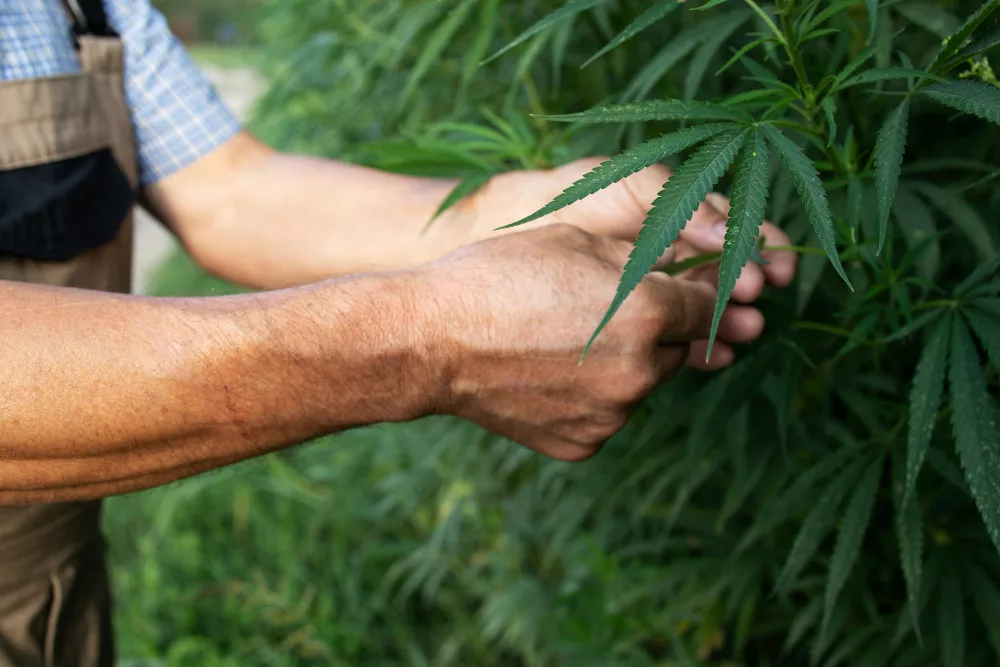
Advanced sex determination methods
Cuttings speed up identification. The technique involves cutting a branch and placing it under a 12/12 cycle to force flowering. In just a few days, the sex is revealed without waiting for the mother plant. This method makes it possible to quickly determine whether the plant is a male or female cannabis, avoiding wasting time and cultivation space with undesirable individuals.
Genetic testing is just as effective. They involve analyzing the plant's DNA to confirm sex as soon as germination takes place. Although expensive, they are 100% reliable. Less accessible to amateurs, these kits require a laboratory or specialized tools.
For those who want to know for sure whether a plant is male or female cannabis, these analyses offer a quick and unequivocal solution, ideal for commercial cultivation where every plant counts. In addition, to guarantee a natural and safe product, we recommend choosing 100% organic CBD from NATURALPES, renowned for its quality and traceability.
The impact of gender on harvest quality
The sex of a male or female cannabis plant directly influences the quality of the final harvest. Inadvertent pollination can considerably reduce the strength and density of female flowers, compromising the value of the product.
While females are sought after for their resinous buds, males have a different potential, often exploited for breeding. Understanding this impact is essential for growing the best quality cannabis.
The effects of pollination on female plants
Pollination turns your precious resin buds into seed factories. By diverting the females' energy towards reproduction, it reduces the concentration of THC and CBD on average. The result is less potent buds, with 56% fewer terpenes.
Even discreet males can ruin a top-quality harvest. That's why identifying in time whether a plant is male or female cannabis is a crucial step in preserving flower quality and purity, essential for extracting effective CBD oils.
When pollen comes into contact with the pistils, the plant triggers an energy-intensive process that results in the formation of seeds. What's on the menu? Resources stolen from the trichomes to feed the embryos. During this process, there will be less resin and more seeds.
Precise knowledge of the male or female cannabis status of each plant enables us to isolate undesirable individuals before they trigger this irreversible mechanism.
Within 90 days, your buds lose their softness, fragrance and punch. A single male is enough to contaminate an entire garden with its 350,000 pollen grains per flower.
Differences in potential between male and female plants
Males are not totally sterile in cannabinoids. Even if their heads pale in comparison with females, some Thai strains reach 0.85% THC. Exceptions like Hizzine 3.9.1969 even show a male advantage. But overall, females remain unsurpassed for their CBD-, THC- and aroma-rich buds.
This contrast between male and female cannabis underscores the importance of knowing the biochemical characteristics of each sex in order to adapt cultivation to its objectives: extraction, reproduction or consumption. For example, to obtain a Gold CBD Oil 20% of optimum quality, it's essential to give preference to females with high cannabinoid profiles.
- Females concentrate 20 to 30% THC, compared with 0.7 to 0.8% in some males.
- Female heads are packed with major cannabinoids (THC, CBD, CBG) and minor cannabinoids (CBC, THCV).
- Males produce mainly minor cannabinoids (CBN, CBG ) in moderate quantities
- Terpenes (myrcene, limonene) are dominant in females, absent from male pollen sacs.
Males hide their game. They're just as useful, as their pollen opens up genetics, their roots secrete minor cannabinoids and their sap contains chemical precursors. If cultivation is well thought-out, exploiting the potential of both male and female cannabis can broaden the range of uses beyond flowers, to include fibers, seeds and secondary active ingredients.

Solutions to guarantee a crop of female plants
To maximize the production of cannabinoid-rich flowers, it's essential to grow exclusively female plants. That's why many growers pay close attention to the distinction between male and female cannabis in the early stages.
One effective solution is to use feminized seeds, designed to produce almost exclusively female plants. These seeds offer many advantages, but there are also certain considerations to be aware of before taking the plunge.
Feminized seeds: advantages and considerations
Feminized seeds have changed the game, as they produce 99.99% females, eliminating the stress of sexing. So you don't have to throw away 50% of your growing plants.
By removing the uncertainty associated with distinguishing between male and female cannabis, these seeds make it possible to optimize each cultivation cycle from the moment of germination, especially when it's clear what CBD is used for in the various applications. This saves growers time, space and resources. These seeds represent a technological leap forward for more efficient and profitable cultivation.
| Comparison of regular and feminized seeds | ||
| Parameter | Regular seeds | Feminized seeds |
| Success rates | 50% females on average | 99.99% females |
| Cost per female plant | 5-10 € per seed, but half wasted | 10-20 € per seed, zero waste |
| Genetic diversity | Best for genetic selection | Risk of genetic impoverishment |
| Difficulty of cultivation | Requires pre-flowering sexing | Simplified, no sexing required |
| Indoor adaptation | Suitable for all methods | Unlimited for cultures with no surprises |
| Variety preservation | Essential for reproduction | Limited for crossover programs |
| Average yield | Depends on female selection | Optimized right from the start |
Feminized varieties make it into the top 10 bestsellers. Green Gelato delivers 27% THC for energizing buds. White Widow, with 19% THC, remains a classic. These pre-selected varieties guarantee quality and yield. There's no need to garden haphazardly when genetics deliver.
Understanding the differences between male and female cannabis now enables growers to better control their crops and avoid the costly mistakes associated with misidentifying plants. Knowing how to differentiate between male and female cannabis plants is a game-changer. Now you know how to tell one from the other.
